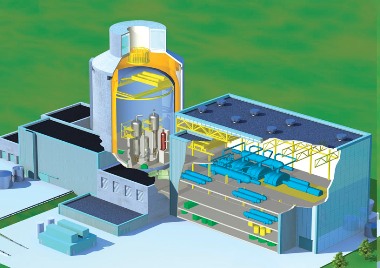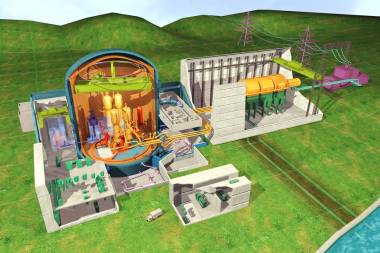A lot of work still lies ahead for Areva and Westinghouse in their aims to sell new reactors in the UK market, according to the most detailed and critical regulatory report yet.
 |
 |
AP1000 and EPR reveal all |
Areva needs to use door control measures to address internal hazards (such as fire, steam release or handling errors with heavy equipment) as well as make changes to its instrumentation and control (I&C) systems; Westinghouse has to speed up its responses to questions about novel construction techniques, external hazards, human factors and the new design of very large squib valves.
GE-Hitachi plans return
Having suspended its involvement in GDA to concentrate on the US licensing process, GE-Hitachi has confirmed to WNN an intent to soon return to the UK market. |
The Health and Safety Executive said it believes that both designs could be suitable for use in the UK, but it will only sign off GDA certificates if all its queries are satisfied. Meanwhile, the UK is on a tight schedule to bring in new reactors to replace old ones and avoid using fossil fuels. This has resulted in a strong determination to complete the GDA process by June 2011 'excluding' certain areas if necessary for examination by a separate process while limited construction work would be allowed.
At present, only Areva's I&C issue appears to present a possible exclusion, although the HSE did not rule out design changes to both reactors in order to answer its questions. For most of the issues, the vendors need to provide more and better information to back up their claims about the designs and the safety case that relies on them. For some, changes to the safety case could suffice, for example Areva's assertions about the reliability of one computer system, which the HSE said "go beyond what is accepted as normal practice and we believe would be difficult to substantiate." Other queries could result in revisions to the designs, such as Areva's proposal to add a back-up manual I&C system.
Westinghouse has been told that its original submission on external hazards (such as earthquake, aircraft impact or flood) "did not provide sufficient information." The company is meant to submit a new document on the topic but this is overdue and "is now delaying our assessment," said the HSE.
More information is also called for regarding the steel-concrete-steel sandwich construction of some AP1000 buildings, which has not been shown to meet the standards HSE expects of a nuclear facility. And HSE said there is a risk that Westinghouse has underestimated the resources it needs to answer questions on large squib valves that are not yet fully developed. Lastly for Westinghouse, it has "failed to respond adequately" to HSE's observations on risks from human factors, but has now put a program of work together to provide the required safety case.
Four EPRs are planned in the UK by EDF Energy: Two at Hinkley Point C and another two at Sizewell C. No proposals for AP1000s have been announced, but two consortia have yet to pick their technology.






_53514_33880.jpg)






